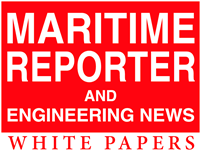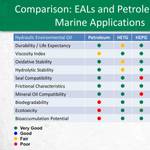
Publication Date: Jul 2016

Even the smallest hydraulic system failure can be very costly in terms of lost productivity, change-out times and repairs. This is compounded in large-scale operations, such as oil rigs or dredging sites. When a hydraulic system failure occurs, it is commonly blamed on the oil or hydraulic fluid being used, and rightly so, since it is estimated that 90 percent of the time a fluid-related pump failure is due to contamination. However, rather than simply questioning the quality or performance of the fluid itself, it is important to examine HOW the contamination occurred, what might have been done to prevent it, and to use this information to mitigate potential future problems. According to original equipment manufacturers and tribologists, the number one cause of hydraulic system failure is water contamination. Through a series of chemical reactions, the presence of water in the system builds a corrosive environment, which shortens the life of the pump or other equipment. While it is impossible to prevent water from getting into your system, there is a series of procedures and protocols that maintenance professionals can implement to measure the amount of water in the system and work to remove it before a failure occurs.

Servitization as a business strategy is sweeping through most industrial sectors. It has benefi ts for all parties on the sell side and buy side. For the manufacturer it provides competitive differentiation, deeper relationships with customers, enhanced customer satisfaction and loyalty, and a source of recurring revenues. For the customer it provides more value for the money and lower cost of ownership, as well as faster and better after-sale service and support. It is clearly the wave of the future in business relationships, and the time is right for the maritime industry to climb aboard.